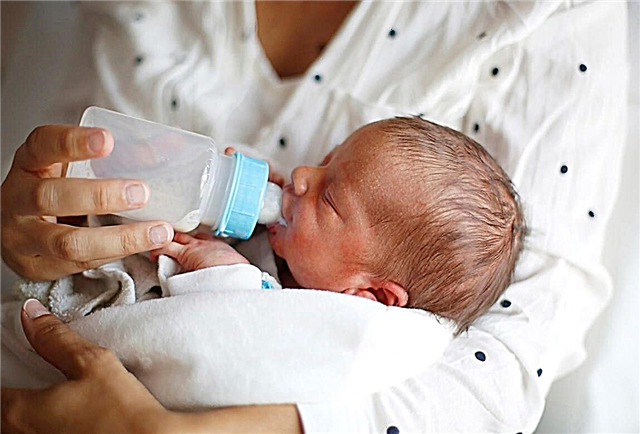
"Heparin" belongs to the group of anticoagulants and is in demand in the formation of blood clots or hematomas. Is this medicine used in childhood and when is it prescribed for children?

Release form
"Heparin" is presented in several forms:
- Ampoules / vials for injections. It is a clear liquid without color or with a slight yellow tint. This solution is intended to be injected into a vein or under the skin. The ampoule / vial contains 1, 2 or 5 ml of the drug, and one package contains 5 or 10 pieces.
- Gel. It is a light, transparent, odorless mass that is quickly absorbed into the skin. One tube can contain such a medicine in an amount of 15 to 100 g.
- Ointment. It is a thick white or white-yellow substance. One tube contains 10 or 25 g of the drug.
Composition
The active ingredient in any form of medication is sodium heparin. It dissolves well in water and very poorly - in acetone, ethyl alcohol, benzene or ether. The source of its production for medicines is animal organs. It is contained in a dose of 5000 IU per 1 ml of solution for injection, 1 g of gel or 1 g of ointment.
In addition to heparin, ampoules contain sterile water, as well as sodium chloride and benzyl alcohol. In such a preparation from some manufacturers there is a solution of sodium hydroxide or hydrochloric acid. Heparin ointment includes two more active substances that enhance its effect. These are benzyl nicotinate and benzocaine. In addition, this form of medication contains stearin, petroleum jelly and other components of the ointment base.

Operating principle
In "Heparin" has the property to slow down the formation of blood clots due to the effect on antithrombin III. The drug activates this compound and accelerates its anticoagulant effect. In addition, the drug interferes with the conversion of prothrombin, as a result of which the activity of thrombin is inhibited, and new molecules are not formed. For this effect, "Heparin" is called a direct anticoagulant.

Indications
Injection form drugs are used to prevent the appearance of blood clots, during surgical treatment, as well as when using hemodialysis. The drug is in demand in laboratories (as a means to prevent premature blood clotting). Venous catheters are washed with Heparin. This remedy is also prescribed for glomerulonephritis or endocarditis.
Topical forms (gel, ointment) used for bruises, trauma, subcutaneous hematomas or localized edema.
Such medicines are prescribed for thrombophlebitis, if it has struck the saphenous veins, as well as for external hemorrhoids. For children, they are most often used for bruising or to eliminate a local reaction to an injection.

From what age is it allowed to take?
There are no age restrictions in the treatment of "Heparin" in the form of injections, but children under 3 years of age are given the drug only under medical supervision. In the annotation to local forms there is a contraindication to the use of an ointment or gel in childhood, but in practice such medicines are prescribed from 1 year... At the same time, it is forbidden to give medication without consulting a doctor.

Contraindications
"Heparin" is not used in case of bleeding or the risk of its development, suspected hemorrhage, recent operations on the brain, organ of vision, liver or after a puncture of the spinal cord. Such a medicine should not be administered for severe liver disease or ulcerative lesions of the digestive tract. In addition, the medication is contraindicated in people with hypersensitivity to its components. Local remedies should not be applied to damaged skin or mucous membranes, as well as with purulent lesions of the skin.

Side effects
Heparin injections can provoke bleeding, cause allergies and negatively affect the digestive tract. At the injection site (as well as when using an ointment or gel), adverse reactions such as redness, soreness, bruising, or skin irritation are possible.
Instructions for use and dosage
Doctors determine the dosage and regimen of medication individually: on the basis of clinical symptoms, the age of the child and the form of "Heparin" used. Injections are made either into a vein (droppers are often prescribed, for which the medication is diluted with saline), or under the skin in the abdomen. Intramuscular administration is prohibited.
The medicine is applied to the skin at the site of a bruise or bruise with a thin layer twice or three times a day. The drug is used until the hematoma or infiltration completely disappears, which most often occurs in 3-7 days.

Interaction with other drugs
The effect of the drug is enhanced if nonsteroidal anti-inflammatory drugs, antiplatelet agents and other anticoagulants are used simultaneously. At the same time, antihistamines, tetracyclines, thyroxine, nicotine and ergot alkaloids reduce the therapeutic effect of "Heparin". It is recommended to mix the injection solution only with saline solution.

Terms of sale and storage
A doctor's prescription is required to purchase the injectable form, and local medicines are over-the-counter. The average price of 5 ampoules of 5 ml is 400 rubles, and the cost of a tube of heparin ointment ranges from 30 to 70 rubles.
You need to store the medicine at home in a place hidden from children, where sunlight does not enter. The storage temperature of ampoules and gel should not exceed +25 degrees, and it is advisable to keep the ointment in the refrigerator (at temperatures below +15 degrees). The shelf life of the gel is 2 years, and of other forms - 3 years.

Reviews
There are mostly positive reviews about the use of "Heparin" for children. Often they relate to the use of local remedies, which are praised for their low cost, ease of use and a fairly quick therapeutic effect.

Analogs
Other drugs with the same active compound can serve as a substitute for "Heparin" - for example, gels "Trombless", "Lyoton 1000", "Lavenum" or "Trombogel 1000". If Heparin is used in injections, the doctor may prescribe other anticoagulants containing enoxaparin sodium or calcium nadroparin instead. These drugs are produced by different companies: Sotex, Farmak, Sanofi, Glaxosmitkline and others. Only a specialist selects such a replacement.
Watch the video instruction from Dr. Komarovsky on how to provide first aid to a child with a bruise.



